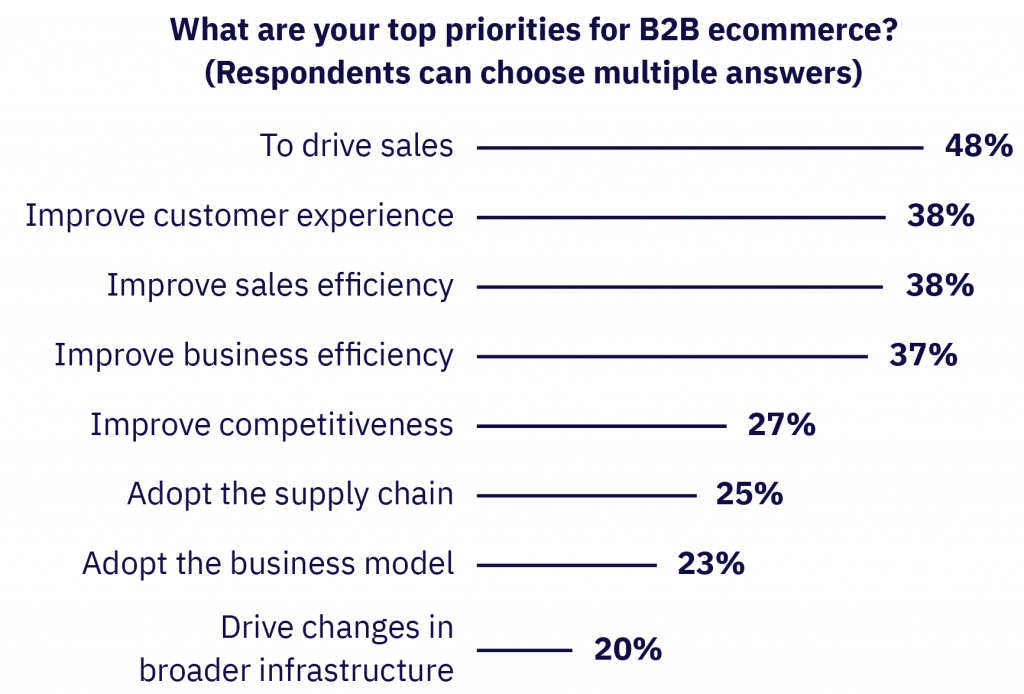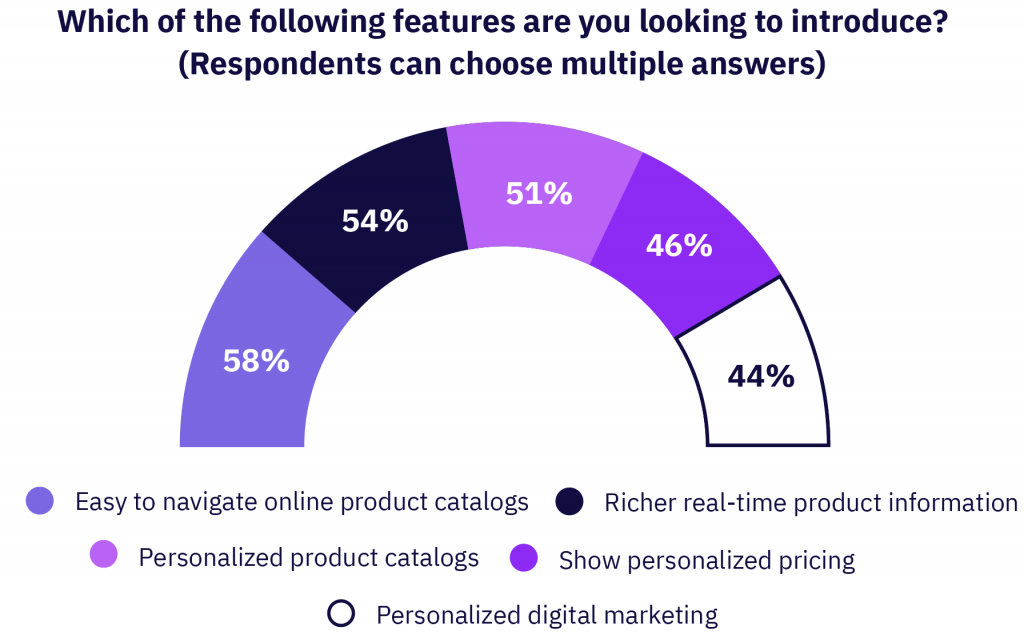COVID-19 is accelerating the digital transformation for many companies, including those in wholesale. It is crucial to embrace the transformation to remain competitive. As a result more and more wholesalers and distributors are adopting B2B ecommerce as a business strategy. This is also confirmed by other developments:
- More than half of the B2B companies in the U.S. have made their products available online.
- According to a Forrester Study in B2B ecommerce, 54% of the respondents cite their own site as the top channel to help achieve the company’s overall priorities.
- In 2017 the B2B commerce market was already worth a staggering $7,6 trillion, three times more than the B2C ecommerce market that same year ($2,4 trillion).
So how does a wholesale company become a successful B2B ecommerce player?
Biggest ecommerce challenges in B2B
Let’s start with the struggles for most companies that enter the B2B ecommerce space. Research shows that a big challenge is selecting the right ecommerce platform and integrating it with existing business proceses. Second is finding the right partners that support the development and implementation of the platform. A third challenge is the changing needs and expectations of the customer. These days, B2B buyers expect a buying experience that is similar to B2C. This does not only require a flexible technology stack that allows you to make changes quickly and easily but also requires an omni-channel strategy.
From good to great
If you have dealt with the challenges described above, it does not automatically mean that you will be great in B2B ecommerce. So what is that magic ingredient then? According to a study from Episerver, 37% of B2B executives state that the digital experience is what sets them apart from the competition.
When asking for the upcoming priorities for B2B ecommerce, it is no surprise that improving the customer experience is among the top of the list:

So what actions and strategies can you deploy to improve the customer experience?
The low-hanging fruit for improving the customer experience is personalization and is backed by research. 46% of B2B buyers say they have a better customer experience when content is personalized. Furthermore, personalization has a big impact to customer loyalty and retention, which are very important drivers for maximizing your return on investment.
So if you look at features that B2B executives want to introduce to their ecommerce platform, it is no surprise that many of them are connected to personalization.

A magnitude of sales uplift
Personalization is not a buzzword as it has definitely proved its effectiveness in B2C. According to a survey done by Accenture, 75% of consumers are more likely to buy from a retailer that recognizes them by name. Next to that, according to a research from GlobalWebIndex, 46% of consumers in the U.S. and U.K. would gladly provide their personal information in exchange for personalized recommendations. This is because most of the people get frustrated when website content is not personalized (according to a survey done by InfoSys). And it is no secret that personalized product recommendations can impact online sales. A report from McKinsey suggests that Netflix and Amazon drive 75% and 35% of their sales through recommendations. This gives an idea about the effects of personalization and the magnitude of sales it can bring.
Differences between B2C and B2B personalization
It is also good to understand that there are some key differences between B2B and B2C personalization. The first difference is that in B2C the personalization is heavily focused on stimulating impulse buying. The B2B buyer journey is not about stimulating impulse buying. So in B2B, personalization is about creating better experiences throughout the buyer journey. An example this is showing an industry specific version of your website when you know the visitor is from that industry. Another big difference is that B2C personalization is tailored to the individual, while B2B personalization is tailored to specific roles people have within the company.
Harvest your own data
In the last couple of years the effectiveness of email marketing in B2B has sharply risen, and this is partly due to personalized email. Also, it is a great way to harvest your existing customer data. For example, buyers who have purchased from your commerce site are more than twice as likely to purchase again when sent remarketing emails. This refers to sending automatic follow-up emails to visitors who have not made a purchase during their recent visits.
Another strategy is segmenting customers based on their role in a company and provide personalized product offerings mails that are relevant to their role. A related approach is segmenting visitors based on browsing history in your webshop and match this with a predefined persona. This is very effective when visitors of your shop are not yet a customer and works great with onsite remarketing. This refers to showing recommended products based on the pages that have been visited or make special offers to returning visitors to seal the deal.
Now over to you
Are you in b2b ecommerce and is personalization a priority for you? If yes, what strategies to you think are essential? Are there any lessons learned you can share? If personalization is not a priority, can you please elaborate why? I am grateful for all your insights.


